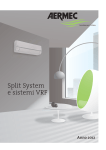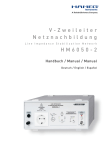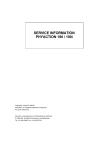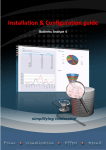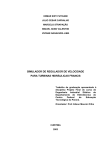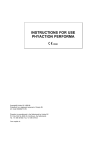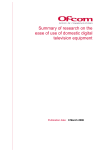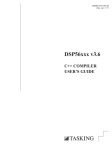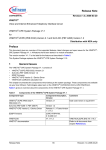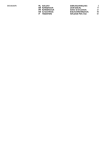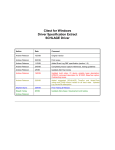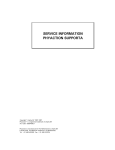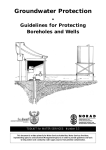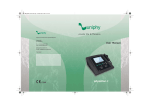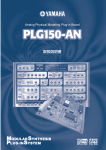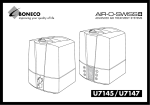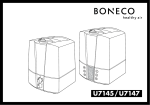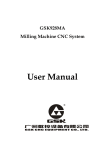Download - Frank`s Hospital Workshop
Transcript
SERVICE INFORMATION PHYACTION 740 & 790 SERIES Copyright© Uniphy BV 1995 Phyaction® is a registered trademark of Uniphy BV Art. Code 93007916.5 Phyaction is manufactured in The Netherlands by Uniphy BV P.O.box 558, NL-5600 AN Eindhoven, the Netherlands Tel. +31-499-471771 Fax +31-499-474734 GENERAL INFORMATION .................................................................. 1 Introduction............................................................................................................................ 1 Safety aspects ....................................................................................................................... 1 Installation.............................................................................................................................. 2 Description of the controls .................................................................................................. 3 Technical specifications ...................................................................................................... 6 Explanation of symbols........................................................................................................ 9 Photos of the current waveforms ...................................................................................... 14 CHAPTER 1 1.1 1.2 1.3 1.4 1.5 1.6 1.7 THEORY OF OPERATION .................................................................. Introduction........................................................................................................................... General block diagram ........................................................................................................ Electrotherapy unit .............................................................................................................. Ultrasound therapy unit ...................................................................................................... Infrared laser unit ................................................................................................................. CHAPTER 2 2.1 2.2 2.3 2.4 2.5 CHAPTER 3 3.1 PERFORMANCE CHECK .................................................................... 23 Safety inspection ................................................................................................................. 23 ADJUSTMENT PROCEDURES ...................................................... Introduction........................................................................................................................... Adjustment of the dose potentiometer guard circuit...................................................... Adjustment of the laser power measuring cell ................................................................ 25 25 25 25 TROUBLE SHOOTING ........................................................................... Introduction........................................................................................................................... Error shutdown procedure ................................................................................................. General test description...................................................................................................... Error numbers summary..................................................................................................... Error descriptions ................................................................................................................ 26 26 27 27 33 34 CHAPTER 4 4.1 4.2 4.3 CHAPTER 5 5.1 5.2 5.3 5.4 5.5 15 15 15 17 18 20 CHAPTER 6 CIRCUIT DIAGRAMS ............................................................................... 39 CHAPTER 1 1.1 GENERAL INFORMATION Introduction The Phyaction 796 is an appliance for ultrasound therapy, electrotherapy (1 channel medium frequency or TENS), combination therapy (MF & US) and laser therapy. The Phyaction 792 is the same as the 796, except that it can't support laser therapy. The Phyaction 793 is the same as the Phyaction 792, except it also contains rectified currents for electrotherapy. The Phyaction 740 can only be used for laser therapy. In this manual the Phyaction 796 is described because it is the most extensive model in the series and the Phyaction 793 for the rectified currents. In this chapter the important features from the users manual for service personnel are listed. In the next chapter the theory of operation will be explained. In chapter 3 is described how service personnel can check the operation of a 796 and in chapter 4 the adjustments which can be executed by service personnel are explained. The next chapter contains information which could be very useful for trouble shooting such as the description of the automatic self test and a list of the error numbers. The schematic diagrams are in chapter 6, the spare parts list in chapter 7 and a list of all the modifications is in the last chapter. 1.2 Safety aspects 1.2.1 Electrical safety The equipment can only be used in areas with provisions in accordance with current statutory requirements. Pay particular attention to the use of protective earth, otherwise the patient leakage current can rise above the permitted limit for type B equipment. 1.2.2 Explosion safety The equipment is not suitable for use in areas where flammable gasses or vapours are present. Therefore, remove the mains plug from the socket before the area in which the equipment is located is disinfected, since some disinfection solutions evaporate and subsequently form an explosive mixture. 1.2.3 Operational safety - - Using the equipment in the vicinity of short wave or microwave equipment can influence the output of the unit. Using this equipment when high frequency surgical equipment is connected to the patient at the same time can result in burning under the electrodes. Patients who have electrical implants (i.e. pacemaker) may only be treated following medical advice. Laser beams are dangerous for the eyes. You must ensure that the laser beams do not reach the eyes. In cases where the risk of laser beams reaching the eyes is increased, for example when the patient is receiving treatment to the face, then he/she should wear safety glasses. Also, when you are holding the probe at some distance from the skin and there is the possibility of the beam reflecting into the eyes, the patient and the therapist should wear glasses. For other treatment it is advised to wear glasses. The equipment is not suitable for use in damp areas. Service Information Phyaction 740 & 790-series Page 1 - A warning sign should be hung on the door to the area in which laser therapy is being applied. The sign should include the laser warning symbol and the text "Attention, laser light is used in the area". The equipment may not be disinfected or sterilized. The equipment contains a number of safety systems which operate independently of the microprocessor. When the safety system detects a fault during electrotherapy the delivery of current is interrupted within a few milliseconds and it is impossible to perform treatment using the equipment. The safety of the patient is therefore guaranteed. Whenever the equipment is switched on (using the main switch) the microprocessor checks the entire safety system for correct operation. 1.2.4 Use of the appliance The equipment and accessories should only be used by authorized personnel and in accordance with all instructions included in these operating instructions. The Phyaction 796 is only to be used for laser, ultrasound and/or electrotherapy. The Phyaction 792 is only to be used for ultrasound and/or electrotherapy. 1.2.5 Radio interference suppression and electromagnetic compatibility This equipment meets the guidelines for ISM equipment relating to electromagnetic compatibility and is radio interference suppressed according to VDE 0871-B. Also see paragraph 1.2.3 Operational safety, concerning the use of the equipment in the vicinity of short wave and microwave equipment. 1.3 Installation 1.3.1 Incoming inspection Check that the equipment, ultrasound head(s) and laser probe(s) have not been damaged during transportation and that the accessories are intact and complete (see chapter 21 ACCESSORIES of the INSTRUCTIONS FOR USE). In the event of damage and/or defect you should inform your supplier. 1.3.2 Mains voltage Your equipment is suitable for a nominal voltage of 110, 120, 220 or 240 Volt AC, 50-60 Hz. Indicated on the rear of the equipment will be the voltage for which it has been wired. You can not alter this yourself. Carefully check this data before you place the mains plug in the socket. The mains input is on the rear of the equipment. 1.3.3 Functional test During production the equipment is tested for electrical safety. Whenever the equipment is switched on, the processor performs an extensive test to ensure that the equipment is operating correctly. In addition you must check whether the display and the indicator lamps are operating correctly. If this is not the case, then you must not use the equipment and you must contact your supplier. If you can not read or if it is difficult to read the display, then press the right hand blue button and the black ¿ button in order to darken the text or the black À button if you want to make the text lighter. 1.3.4 Selecting the operating language You have the possibility to change the operating language by depressing the left hand yellow button and Service Information Phyaction 740 & 790-series Page 2 holding it down until the STANDARD SETTINGS menu appears. You have the choice from various languages. Once selected, the equipment will use the language you have chosen. 1.3.5 Location and transportation The equipment must be set up horizontally and stable. You must ensure that the perforated sections on both sides of the casing are not covered up, thus hindering air circulation. Objects must not be placed on the equipment and you must ensure that no liquid enters the equipment. 1.4 Description of the controls On the last page of this service manual you will find an illustration of the equipment and the accessories. 1.4.1 Display The display1 consists of separate picture elements which are controlled by a processor so that you can see text and figures. When you are performing a treatment, the display shows all of the information you require: Top left is the name of the therapy form. For combination therapy you will find the names of the two selected therapy forms here. The central section provides information about the parameters. The right-hand section provides information about the output current during electrotherapy, the power emitted during ultrasound therapy and the energy emitted at that moment for laser therapy. For ultrasound combination therapy with a current form, the right-hand section provides the information mentioned above for both selected forms of therapy. Additionally, this section also provides information regarding the therapy time. The bottom line of the display shows the functions of the blue buttons. Lay out of the display 1.4.2 Signal lights In the centre of the panel you will find three coloured lights: The green lamp2 shows that the equipment is connected to the mains and is switched on. The yellow lamp3 provides information during electrotherapy regarding stimulation. For medium frequency surge current it shows the stimulus time, for current forms with frequency modulation it shows the time during which the frequency is low, in other words, when the current form is the most sensitive. The red lamp4 illuminates when the safety system has detected a fault that causes the equipment to be non-operational. A message appears on the display. Service Information Phyaction 740 & 790-series Page 3 The yellow lamps5 beside the output connectors for the ultrasound heads and the laser probes illuminate respectively as soon as ultrasound or infra-red power is emitted. The yellow lamp beside the current output6 illuminates as soon as 5mAeff of current is exceeded. 1.4.3 Infra-red sensor Infra-red laser beams are invisible. In order to check that the laser probe is operating correctly, a sensor7 is built in. This sensor is located to the right above the current output socket. Using application no. 903 the infra-red laser power can be tested. If the laser probe is held in front of the sensor, the measured peak power will appear on the display. We advise you to perform such a measurement periodically, for example monthly. When performing a treatment using laser therapy, the infra-red sensor can be used to test whether laser energy is being emitted through the probe. 1.4.4 Knobs On the front and to the right there are three potentiometers. When you turn these knobs fully anticlockwise, you will detect a click indicating that they are in the zero position. From the top to the bottom the knobs have the following functions: Using the top knob8 you can adjust the laser energy in Joules. The treatment time changes automatically. The middle knob9 is used to adjust the peak intensity in Watt/cm2 for ultrasound. The bottom knob10 is the dose regulator for electrotherapy. 1.4.5 Push-buttons - The blue buttons11 have a function which is different for each program and each menu. The display indicates clearly whether the buttons have a function and, if so, which function. The black buttons ¿ or À12 are used to increase or decrease the value of a parameter which you have previously selected. The left hand yellow button13 is used to return to the main menu. If you hold down this button for a few seconds you will arrive in a special menu STANDARD SETTINGS. Once you have selected a program, the right hand yellow button14 quickly and easily provides you with further options of the selected program. Using this button you can call up the applications from the main menu. Using the green button15 you can call up the special memory function. You can store, retrieve and change 250 different treatments. 1.4.6 Output connectors and sockets on the front The equipment is fitted with a number of connectors for the following functions: The two connectors16 on the far left are used to connect the laser probe(s). It does not matter to which of the two connectors the laser probe(s) is/are connected. The two middle connectors17 are for connecting the ultrasound head(s). Here too it makes no difference to which connector the head(s) is/are connected. You can connect two heads at the same time. The two safety sockets18 on the far right are used for connecting the electrode cables during electrotherapy. For combination therapy you can only use the socket on the far right, since in this case the other socket is without current. In this case the metal treatment surface of the ultrasound head forms the other electrode. 1.4.7 Key switch When you want to switch on a program utilizing laser, you should turn the key switch19 to the right. To Service Information Phyaction 740 & 790-series Page 4 switch off, turn the key to the left. To prevent the use of laser by unauthorized personnel, you should remove the key from the equipment when it is not being used. 1.4.8 Operating elements on the rear of the equipment The following operating elements are located on the rear of the equipment: Mains input with main switch20. Fuse holder21 between the mains input and the main switch. The rating of the fuse to be used is stated on the rear of the unit. The serial in- and output22. These are for future extensions. Connector for potential mains equalisation23. Label with equipment data24. 1.4.9 Laser probes Various laser probes25 can be supplied. When you have two probes, these can be connected to your equipment at the same time. Using a blue button you select from the program which probe you wish to use. A green lamp26 then illuminates on the selected probe. On the probe is a knob27, which has to be pressed to allow laser light to be emitted. When laser light is being emitted, the yellow lamp28 on the probe illuminates. For reasons of patient safety and correct operation of the equipment, the connection of probes other than those supplied by Uniphy is not permitted. If in doubt about the proper operation of your laser probe, you can check this by using technical application no. 903. Looking into the probe when laser light is being emitted can seriously damage the eyes. Therefore, never look into the laser probe and never point it towards the eyes. 1.4.10 Ultrasound treatment heads You have the choice of three ultrasound heads29 with an ERA (Effective Radiation Area) of respectively 1, 4 or 10 cm2. For each treatment head a multi-functional head holder30 is supplied. With each treatment head both 1 and 3 MHz ultrasound can be given. Two treatment heads can be connected to the equipment at the same time, provided the treatment heads do not have the same format. Using one of the blue buttons you select which of the two heads you wish to use. A green lamp31 illuminates on the treatment head as soon as it has been selected and a red lamp23 illuminates when the surface of the head makes insufficient contact with the patient. The ultrasound power is then automatically adjusted back so that overheating and subsequent wear of the treatment head is prevented. During insufficient contact the treatment time also stops and when contact is made it continues. In this way the set time is actually utilized. Before using a new treatment head a one-off operation should be performed, using technical application no. 902, to tune your equipment to the treatment head. 1.5 Technical specifications The Phyaction 790-series consists of two models: the Phyaction 792 and 796. The same specifications for the Phyaction 796 also apply to the Phyaction 792, however, the 792 model is not fitted with an IRlaser. Service Information Phyaction 740 & 790-series Page 5 1.5.1 Ultrasound therapy General: Duty-cycle adjustable from 1:1 up to 1:15 Power setting using potentiometer The unit calculates the total effective power and displays it on the LCD Option to tune the ultrasound head to the unit using a special program Option of combination therapy using one of the 4 options with electrotherapy current forms For each head a green lamp illuminates as soon as the head is selected During insufficient contact the ultrasound power is automatically reduced and a red lamp illuminates on the head. The timer stops Reflected waves are partially absorbed by the heads to avoid intensity peaks Specifications small treatment head (model 291): Frequencies: 0.8 MHz and 3.3 MHz BNR at 0.8 MHz: <5 BNR at 3.3 MHz: <4 ERA: 1 cm2 Output power: 0 - 1.5 W/cm2 at 3.3 MHz continuous 0 - 2 W/cm2 at 0.8 MHz continuous 0 - 3 W/cm2 at 0.8 and 3.3 MHz pulsed Specifications large treatment head (model 292): Frequencies: 0.8 MHz and 3.3 MHz BNR at 0.8 MHz: <5 BNR at 3.3 MHz: <4 ERA: 4 cm2 Output power: 0 - 1.5 W/cm2 at 3.3 MHz continuous 0 - 2 W/cm2 at 0.8 MHz continuous 0 - 3 W/cm2 at 0.8 and 3.3 MHz pulsed Specifications extra large treatment head (model 293): Frequencies: 1.0 MHz and 3.4 MHz BNR at 1.0 MHz: <5 BNR at 3.4 MHz: <4 ERA: 10 cm2 Output power: 0 - 1 W/cm2 at 1.0 and 3.4 MHz continuous 0 - 1.5 W/cm2 at 1.0 and 3.4 MHz pulsed 1.5.2 Laser therapy General: Pulse repetition frequency 2 - 5000 Hz Energy adjustable with potentiometer Operating distance 0 - 5 cm (for energy density calculation) Conversion of energy to energy density with given operating distance and calculation of treatment area Test eye for checking power of the laser A green lamp illuminates when probe is selected and yellow lamp when probe emits energy Prior to accessing the laser program the key on the unit should be turned Specifications 15 W probe (model 241): Peak power: minimum 12 W, maximum 18 W Max. average power: 12 mW Wave length: 904 nm (infrared) Laser class: 3B Service Information Phyaction 740 & 790-series Page 6 - Pulse duration: Beam diameter: Divergence angle: Dimensions: 150 ns 2.5 mm approx. 20 degrees diameter 2.5 cm, length 21 cm Specifications 25 W probe (model 242): Peak power: minimum 22 W, maximum 30 W Max. average power: 25 mW Wave length: 904 nm (infrared) Laser class: 3B Pulse duration: 200 ns Beam diameter: 4.0 mm Divergence angle: approx. 32 degrees Dimensions: diameter 2.5 cm, length 21 cm Specifications 4x18 W probe (model 245): Peak power per diode: minimum 16 W, maximum 22 W Max. average power: 60 mW Wave length: 904 nm (infrared) Laser class: 3B Pulse duration: 150 ns Beam diameter: 4 x 2.5 mm Homogeneous intensity: from appr. 3 cm from the probe Divergence angle: approx. 20 degrees Dimensions: diameter 4 cm, length 22 cm 1.5.3 Electrotherapy Parameters two-pole interferential current: Carrier wave frequency: 4000 Hz AMF: 1 - 200 Hz Spectrum: 0 - 200 Hz Time: 1 - 100 s Contour: 1 - 100% Output current: 140 mApeak maximum at 500 Ohm Parameters, medium frequency surge current: Carrier wave frequency: 4000 Hz AMF: 1 - 200 Hz Stimulation time: 1 - 100 s Pause: 1 - 100 s Surge: 1 - 100% Output current: 140 mApeak maximum at 500 Ohm Choose from automatic or manual stimulation using pulsator Parameters TENS current, continuous: Pulse time: 10 - 300 µs Pulse frequency: 1 - 500 Hz Spectrum: 0 - 200 Hz Time: 1 - 100 s Contour: 1 - 100% Output current: 140 mApeak at 500 Ohm Pulse form: asymmetrical Parameters TENS current, burst: Pulse time: Pulse frequency: 10 - 300 µs 80 - 500 Hz Service Information Phyaction 740 & 790-series Page 7 - Burst frequency: Number of pulses per burst: Output current: Pulse form: 1 - 10 Hz 5 140 mApeak maximum at 500 Ohm asymmetrical TENS current, surge (Phyaction 793 only): Pulse time: 10 - 300 µs Pulse frequency: 1 - 500 Hz Train duration: 1 - 100 s Train interval: 1 - 100 s Surge: 1 - 100% Output current: 140 mApeak at 500 Ohm (at a pulse time up to 100 µs) Pulse form: asymmetrical Continuous galvanic current (Phyaction 793 only): Output current: 80 mApeak at 500 Ohm Interrupted galvanic current, rectangular or triangular pulse (Phyaction 793 only): Pulse time: 0.1 - 1000 ms Pause time: 2 - 9999 ms Output current: 80 mApeak at 500 Ohm Faradic current, rectangular or triangular pulses (Phyaction 793 only): Pulse time: 0.1 - 1000 ms Pause time: 2 - 9999 ms Train duration: 0.05 - 100 s Train interval: 0.05 - 100 s Surge: 1 - 100% Output current: 80 mApeak at 500 Ohm Ultra Reiz current (Phyaction 793 only): Pulse time: 2 ms Pause time: 5 ms Output current: 80 mApeak at 500 Ohm Diadynamic currents MF, DF, CP, CP-ISO, LP (Phyaction 793 only): MF frequency: 5 - 200 Hz DF frequency: 2 x MF frequency MF time: 1 - 100 s DF time: 1 - 100 s Surge: 1 - 100% Output current: 80 mApeak at 500 Ohm 1.5.4 Further details - Fully programmable memory with space for up to 250 treatment procedures and with battery backup Many recommended programs for simple application per indication You can set different operating languages yourself: Dutch, English, German, French, Italian and Spanish Pre-programmed parameters can be changed to your requirements Treatment time adjustable to 30 minutes Service Information Phyaction 740 & 790-series Page 8 - 1.6 1.6.1 Acoustic monitor with volume control can be switched on Serial input and output for extensions Built-in electrode and cable test Solid metal casing (Faraday's cage) Ergonomically designed with very attractive appearance Simple to operate due to clear symbols and the availability of different languages on the display Dimensions: 41 x 28 x 13 cm Weight Phyaction 796: 6.5 kg (excluding accessories and packing) Phyaction 740: 5.7 kg (excluding accessories and packing) Insulation class (790 series): I, type BF Phyaction 740: I, type B Voltage: 110, 220, 230 or 240 Volt, 50-60 Hz Input current (790 series): maximum 300 mAeff at 230 V and 600 mAeff at 110 V Phyaction 740: maximum 150 mAeff at 230 V and 300 mAeff at 110 V Explanation of symbols General Indication of treatment time Contrast 1.6.2 Electrotherapy Output current Two pole MF current MF surge current Biphasic current, continuous Biphasic current, burst Service Information Phyaction 740 & 790-series Page 9 1.6.3 Electrotherapy, parameter adjustments Contour Pulse time biphasic current Frequency of biphasic current Burst frequency of biphasic current Stimulation time with MF surge current Stimulation interval with MF surge current Timing clock Sound signal on/off 1.6.4 Ultrasound therapy Selected ultrasound head, small, large, extra large Duty-cycle 1.6.5 Ultrasound therapy, parameter adjustments Selectable ultrasound head, small, large, extra large Toggle ultrasound frequency Duty-cycle Timing clock 1.6.6 Laser therapy Laser probe, 15W Laser probe 25 W Laser probe 4 x 18 W Service Information Phyaction 740 & 790-series Page 10 Pulse repetition frequency Turn key clockwise Turn key anti-clockwise 1.6.7 Laser therapy, parameter adjustments Selectable laser probe, 15W Selectable laser probe, 25 W Selectable laser probe, 4 x 18 W Pulse repetition frequency Distance between laser probe and skin Set total energy to zero Repeat function Sound signal on/off 1.6.8 Treatment memory Programmable memory Store a therapy Start a stored therapy Clear a stored therapy Information memory usage Service Information Phyaction 740 & 790-series Page 11 1.6.9 Symbols on the front of the appliance Memory function Return to main menu Options for this program Raising the selected parameter Lowering the selected parameter Indication light for Stand-by Indication light for stimulus Indication light for detected errors Current "OFF" for a part of equipment "ON" for a part of equipment Laser Ultrasound Sensor for laser power measurement Attention, see manual Service Information Phyaction 740 & 790-series Page 12 1.6.10 Symbols on the back of the appliance Off On Fuse Serial in- and output Equipotentiality Type BF Do not open Attention, see manual 1.6.11 Laser, warning symbol and explanatory labels Laser warning symbol; on every laser probe INVISIBLE LASER RADIATION AVOID EXPOSURE TO BEAM CLASS 3B LASER PRODUCT LASER APERTURE 15 Wpk/ 150 ns/ 904 nm Service Information Phyaction 740 & 790-series Explanatory label; on every laser probe Explanatory label; on laser probe model 241 Page 13 LASER APERTURE 25 Wpk/ 200 ns/ 904 nm LASER APERTURE 4x18 Wpk/150 ns/904 nm Explanatory label; on laser probe model 242 Explanatory label; on laser probe model 245 Type B 1.7 Photos of the current waveforms Two pole interference MF surge current Biphasic current, burst Biphasic current, continuous Service Information Phyaction 740 & 790-series Page 14 CHAPTER 2 2.1 THEORY OF OPERATION Introduction In this chapter a description of the electronic construction of the Phyaction 790-series is given on the functional level. Only where safety aspects are concerned we will look into the actual circuitry. The next paragraph deals with the whole appliance and those blocks that are in use with all therapies. In the subsequent paragraphs more detailed block diagrams for each kind of therapy will be discussed. 2.2 General block diagram Figure 1 shows the functional blocks of the Phyaction 797VIP. The most extensive appliance of the series. The microcontroller core controlling the entire appliance is featured in the middle. Immediately below that are the blocks associated with the three therapies and the output panel. At the left there is the user interface and at the right the serial interface. In the upper part there is the inevitable power supply. The parallel interface which is only present in the VIP versions is also drawn here. Figure 1, Functional blocks of the Phyaction 797VIP Service Information Phyaction 740 & 790-series Page 15 2.2.1 Microcontroller core As central processing unit a microcontroller is being used in favour of a microprocessor. The reason being that a microcontroller, by its construction and available commands, is particularly suited for bit-level operations. From the software point of view there is no difference but it is much easier to manipulate a single I/O-pin. The microcontroller used in the Phyaction 790-series is the 80C552. It incorporates in addition to the actual 8051 controller the following circuits: - 256 Byte RAM - 3 programmable timers - 1 A/D-Convertor with eight multiplexed inputs and 10-bits resolution - 5 I/O ports, each 8 bits wide - 2 Pulse width modulators with 8-bits resolution - 1 I²C-bus interface for internal data transmission - 1 full-duplex UART (Universal Asynchronous Receiver and Transmitter) - 1 Watchdog timer Apart from this microcontroller the core contains the following devices: - an 8-kbyte RAM with integrated lithium battery (NOVRAM) - a 1-Mbit EPROM - a programmable I/O-expander - an analog multiplexer to increase the amount of ADC inputs - some PAL's and HCMOS chips as decoders and buffers 2.2.2 User interface A LCD (Liquid Crystal Display) with a console forms the major link in the communication between the operator and the microcontroller. The display is connected directly to the microcontroller via the data-bus and the keys of the console via the I²C-bus. The menus and program screens are shown on the display and the operator selects the requested therapy with the buttons and also changes or enters parameter settings with them. 2.2.3 Serial interface A serial interface identical to that in the Phyaction 780-series is provided to be used with future extensions. The way of operating is similar to that of the teletype current loop although the level of the current has been reduced. The interface is fully isolated from the rest of the circuits in the appliance by means of optocouplers with an isolation voltage of 2.5 kV. 2.2.4 Parallel interface This unit, which is only present in the VIP versions, makes up the link between the LCD and the I/O-card in the PC. Again using optocouplers with an isolation voltage of 2.5 kV to achieve full galvanic isolation, the necessary control-signals are tapped and the data is synchronously stored in a RAM. This RAM in its turn is being asynchronously read by the software running on the PC which subsequently reconstructs the image shown on the LCD. 2.2.5 Power supply The power supply is of a conventional linear design with a mains transformer for medical devices followed by secondary fuses, bridge rectifiers and smoothing capacitors. From the unstabilised voltages created in this way, the one called +29V is used to supply the power stages for the current generation and the ultrasound generation. The other supply voltages, +24V, +15V, -15V and +5V (Vcc), are stabilised by linear regulators with the latter three in addition being protected from overvoltages by crowbars. A reset signal is issued to the microcontroller when the +5V (Vcc) is beneath the threshold Service Information Phyaction 740 & 790-series Page 16 level for the logic ICs. 2.3 Electrotherapy unit Figure 2 shows the functional blocks for the electrotherapy unit and the associated safety circuit. These circuits are identical to the ones in the Phyaction 780-series. Just a minor simplification has been made in the setting of the maximum current guarding because for the near future only generation of MF currents and TENS is envisaged. Also as a consequence thereof the current-mode facility and the allied switch-over options in the patient output circuit are not needed for the time being. Figure 2, Functional blocks of the electro-therapy unit 2.3.1 Waveform synthesis The current waveform being selected, the microcontroller accordingly controls the waveform synthesizer to yield the required waveform. The sample data of the waveform are stored in an EPROM and from there transferred to the D/A-converters in the course of the phase. The magnitude of the resulting wave is always proportional to the value of Vpot being set by the intensity control-knob because it is established by modulating this control-voltage with multiplying D/A-converters. 2.3.2 Chopper The main purpose of the chopper is to apply the waveform to one of the two inputs of the V/C-converter and to establish in this way the polarity. With TENS the pulses are formed directly by activating the chopper to pass its input voltage to one half of the V/C-converter. In case of rectified current generation the chopper is operated on a substantially higher switch-rate and the output current is rectified before being applied to the patient. The used switching rate yields an unnoticeable current in case of a defective rectifier. Service Information Phyaction 740 & 790-series Page 17 2.3.3 Voltage to current converter The voltage-to-current-converter (V/C-converter) converts, as the name indicates, the applied input voltage into a linear proportional output-current. As it is conceived as a balanced stage it is easy to determine the polarity of the output current by applying the controlling voltage to one of the two inputs. The primary output current flows through a low-ohmic resistor. The voltage drop across this resistor is proportional to the absolute magnitude of the actually generated output current and is fed to the safety circuit. In order to reduce the power dissipation in the actual V/C-converter it is powered through a so called tracing series regulator. This regulator lowers the supply voltage to a level that just accommodates the converter. 2.3.4 Safety circuit The voltage drop sensed in the V/C-converter is used in this circuit to monitor whether the output current oversteps the limits as stated in IEC 601-2-10 or 150% of the set value, whichever is smaller. In addition the intensity control is monitored for interruptions of the ground terminal. This all is achieved fully independent of the microcontroller by comparators that, in case of a fault, switch off the safety relay, which interrupts the patient current circuit. This happens so fast that even in case the full supply voltage is suddenly applied to one of the primary windings of the output transformer, the energy contents of the resulting pulse will be well below the allowed limit. Once the safety relay has been switched off it remains in this state and one must switch on the appliance after the cause has been removed, e.g. turned up intensity control at switch-on. Because on switch-on of the appliance a selftest is performed which of course includes a test of the safety circuit, a way is provided for the microcontroller to switch on the safety relay. This is necessary as the safety relay will be in the off state after switch-on and should also switch off a couple of times in the course of the selftest. This possibility to switch on the safety relay is time limited however to 3 seconds from power-on. When this time has expired the microcontroller only can switch off the safety relay, e.g. when an error of another nature has been detected. In this way it is guaranteed for the safety circuit to operate independently from the generation of the patient current and the software. 2.3.5 Current mode selection As mentioned before it is also possible to generate rectified currents like diadynamic, Ultra Reiz, galvanic, etcetera. To that object a rectifier is switched into the patient current circuit. The choice between rectified and alternating currents is also sensed by the microcontroller to select the adherent set of waveform options and waveform synthesizer control-signals. The rectifier circuit is only present in the Phyaction 793. 2.4 Ultrasound therapy unit Figure 3 shows the functional blocks for the ultrasound therapy unit. As the ultrasound power is generated by switching, it appeared to be necessary to encapsulate the committed circuitry, from the PLL (Phased Locked Loop) up to the impedance match and including the SSMPS (Secondary Switch Mode Power Supply), in a tin case to meet the emission-limit requirements. This shielding extends itself over the inner shield conductor of the treatment head cable up to the transducer which is mounted in a closed aluminum cylinder. Service Information Phyaction 740 & 790-series Page 18 Figure 3, Functional blocks of the ultrasound therapy unit Settings of parameters as duty cycle, treatment time and frequency, 1 or 3 MHz resp., is done over the user interface. The microcontroller determines the precise operating frequency for the selected treatment head, based upon the identification codes that have been entered during installation of this treatment head. These codes are also used to assess the emitted amount of ultrasound power. The microcontroller also counts down the treatment timer, which it will halt when the emission of ultrasound power is interrupted during the treatment. The operator sets the required ultrasound intensity with the control-knob of the same name. The microcontroller uses the control-voltage Vpotus together with the identifying codes and the type of the selected treatment head to calculate Vcontrol which is fed to the SSMPS in order to generate the requested amount of ultrasound power. The momentary output power converted by the duty cycle is shown on the display as effective output power. 2.4.1 PLL Because the microcontroller is not capable of generating the drive frequency directly, a PLL (Phased Locked Loop) is used to convert the low-frequency control-signal fcontrol to the drive frequency 2xfus needed. Like the description suggests, this frequency is a twofold of the ultrasound-frequency because it gets divided by two in the modulator. As there are two operating areas for the ultrasound-frequency, about 0.8 and 3.3 MHz respectively, and the control-signal fcontrol always is lying about 400 Hz, the feedback loop of the PLL is closed via a divider whose divisor is switched together with the oscillator range. To prevent operation on faulty ultrasound-frequencies, e.g. in absence of the fcontrol signal, a lockout monitor has been provided whose output is wired-orred with Errorus. 2.4.2 Modulator The modulator switches its outputs with half the rate of the drive frequency 2xfus to achieve an exactly symmetrical driving of the power stage. The duty cycle signal is used to switch off synchronously both outputs in order to prevent any 'misfirings'. As a result the ultrasound output-signal is completely switched on and off (CW modulation). Errorus forms another way to switch off the outputs asynchronously in case of a fault. Service Information Phyaction 740 & 790-series Page 19 2.4.3 Secondary switch mode power supply This is a regular down-converter powered by the +29V supply. The only peculiarity being that its output voltage is controllable by Vcontrol. In this way the microcontroller can set the ultrasound power by setting Vcontrol proportional to the square-root of the required power. 2.4.4 Power stage The power stage is a balanced switched half-bridge. It is supplied by the SSMPS mentioned above to control the momentary output power. The switching operation being controlled by the modulator as described above. The switches are formed by power-MOSFETs driven from buffers that insert a switchon gap to prevent both sides from conducting simultaneously. 2.4.5 Impedance matching The nature of the load of the transducers in the treatment head is essentially capacitive and varies with the surface area and the operating frequency. Therefore a collection of inductors and capacitors is available from which the microcontroller inserts the required combination for the selected type of the treatment head and operating frequency. 2.4.6 Ultrasound treatment head The most important part is of course the transducer, a piezoelectric crystal with a surface area appropriate for the type of treatment head. This piezoelectric crystal is mounted on the base of an aluminum cylinder, with the thickness of the base enabling it to use two considerably different operating frequencies. The aluminum cylinder also functions as the second electrode for the patient current when applying combined therapy. A temperature sensor is mounted on the other end of the cylinder to monitor the temperature of the treatment surface. The type of the treatment head is encoded by a resistance value. Also provided are LED-lamps for signalling purposes. A green colour signals the treatment head being stand-by or in normal operation and a red colour signals an interruption of the treatment because of overheating of the treatment surface or insufficient acoustical contact. The LED-lamps are driven by a single conductor by controlling the direction of the current. 2.4.7 Safety circuit As described above a lock-out of the PLL will force the modulator to switch off. The supply voltage of the power stage is also monitored for voltages beyond the intended operating range. This is done independently from the microcontroller as it senses this voltage already to adjust Vcontrol for tolerances in the SSMPS. The resulting Errorus signal inhibits the modulator and is also sent to the microcontroller. The Errorus signal can also be activated the other way round by the microcontroller if it detects another error. 2.5 Infrared laser unit The circuit for infrared laser therapy consists of two main parts. The part that delivers the actual laser pulse is located in the laser probe. The control-circuit and the measuring facility are in the base appliance. Only with the switchlock turned on the power supply is connected to the laser probe and the I/O-buffers. This warrants the operational safety as it is therefore impossible to release laser radiation without using the key. Service Information Phyaction 740 & 790-series Page 20 Figure 4, Functional blocks of the infrared laser therapy unit The microcontroller controls the laser probes through the I/O-buffers. The operator sets with the energy control-knob the amount of energy that has to be delivered. The microcontroller converts this, depending on the selected repetition rate, distance to the surface to be treated and the laser probe being employed (= type of laser), into energy per square centimetre and required treatment time. These three parameters are simultaneously evaluated and shown on the display whilst the energy control-knob is being operated. When the pushbutton on the laser probe is depressed, the microcontroller issues trigger pulses to the laser probe and calculates how much energy has been delivered. The triggering stops if this has accumulated to the same amount of energy as being set. 2.5.1 Putting into operation Pressing the pushbutton on the laser probe starts the issue of trigger pulses and switches over the signal lamps provided that the laser stand-by line is active. Only with the pushbutton being depressed the trigger pulses can reach the pulse recovery circuit. 2.5.2 Pulse recovery This block consists of a one-shot with its pulse time determining how long the driver switch remains conductive. Triggering with rates higher than can be handled by the laser probe is prevented by a second one-shot that inhibits retriggering while being active. 2.5.3 Laser driver stage This is basically a capacitor that is being discharged through the laser diode by a switch. Using the appropriate layout yields the current waveform needed. As long as the switch remains conductive the current through the up-converter inductor will increase. At the end of the conductive period determined by one-shot of the pulse recovery this will result in recharging of the capacitor with the energy stored in the inductor. Service Information Phyaction 740 & 790-series Page 21 2.5.4 Trickle charger At repetition rates below 400 Hz the leakage discharge of the capacitor gets significant so too less energy would remain for the next laser pulse. Therefore this trickle charger which operates in parallel to the switching element in the laser probe periodically restores the energy level between the laser pulses. 2.5.5 Laser test facility A photo-pindiode is illuminated trough an attenuating window by the laser diode to be measured. The peak value of the resulting diode current is a measure for the intensity of the laser beam. Because the type of the laser diode is known the peak power of the laser pulse can be assessed and shown on the display. Service Information Phyaction 740 & 790-series Page 22 CHAPTER 3 PERFORMANCE CHECK 3.1 Safety inspection 3.1.1 Visual inspection yes no yes no yes no Passed, when all applicable items are answered with YES. Is the user manual there? Is the casing of the appliance undamaged? Is the label well readable? Are the controls, display, lights and connectors all right? Are the mains input and the equipotentiality busbar all right? Are the electrodes, cables and connectors undamaged? Are ultrasound therapy, cables and connectors undamaged? (Pay special attention to possible leaks in the treatment heads.) Are the labels on the ultrasound treatment heads readable? Are the laser probes, cables and connectors undamaged? (Pay attention to scratches on the glass of the laser output (aperture).) Are the labels on the laser probes readable? Are the laser protection glasses on hand and in good condition? 3.1.2 Functional test, general Passed, when all applicable items are answered with YES. Is the automatic selftest executed successfully at power on? Is an error message appearing when the appliance is powered on with the current dose potentiometer turned on? 3.1.3 Functional test, electrotherapy part Passed, when all applicable items are answered with YES. Do the current waveforms and amplitudes correspond with the data in the user manual when measured with an oscilloscope and a 500 Ω load? Does the current flow through the right safety connector and the ultrasound treatment head instead of between the two safety connectors when the combination therapy menu is selected? Service Information Phyaction 740 & 790-series Page 23 3.1.4 Functional test, ultrasound part yes no yes no yes no Passed, when all applicable items are answered with YES. Is the appliance adjusted to all treatment heads? 1 cm² 4 cm² 10 cm² Does the ultrasound output correspond with the power displayed on the 1 cm² LCD, for both frequencies at maximum intensity? 4 cm² 10 cm² 3.1.5 Functional test, laser part Passed, when all applicable items are answered with YES. Does the green light on the probe only burn when the laser is switched on with the key? Does the yellow light only burn when the laser is selected and the pushbutton is pressed? Is laser light emitted only when the yellow light is burning? Is the emitted laser power correct? Does the displayed power measured with the laser test cell correspond with the emitted laser power? 3.1.6 Test of the electrical safety according to VDE 0751 Parameter Measured value Limit Remarks < 0,2 Ω Protective earth resistance Ω Enclosure leakage current µA < 1000 µA Patient leakage current µA < 5000 µA 3.1.7 Dielectric strength test These tests need only be executed when repairs have been made in the mains part or in the output circuits. Passed, when all applicable items are answered with YES. Does the isolation between the enclosure and the mains withstand 1.5 kVAC during 1 minute or 1.8 kV during 1 second? (appliance not switched on.) Does the isolation between the enclosure and the current output withstand 1.5 kVAC during 1 second? (appliance not switched on.) Service Information Phyaction 740 & 790-series Page 24 CHAPTER 4 4.1 ADJUSTMENT PROCEDURES Introduction Only the adjustment procedures which can be carried out without special training are described in this manual. Other adjustments should not be carried out because of possible safety hazards. After any repair or printed circuit board (PCB) swap the performance check (chapter 3) has to be carried out. For repairs on the printed circuit boards themselves it is often necessary to carry at (part of) the PCB adjustment procedures. This can only be carried out by Uniphy Service and Production personnel. 4.2 Adjustment of the dose potentiometer guard circuit For this adjustment you need a voltmeter (DC, 0.2%) and a small screwdriver. This adjustment has to be carried out every time the main board (PCB 792X) or the control board (PCB 791X) are replaced. Connect the voltmeter to MP20 (GND) and MP21 (Vdose) on the front PCB (791X). Switch the appliance on. Adjust the voltage measured to 4.51 V ± 0.01 V with P10, while the dosage regulator is in the zero position. When this is done, switch off the appliance and remove the voltmeter cables from the measure points. 4.3 Adjustment of the laser power measuring cell For this adjustment you will need a calibrated laser probe (model 241 or 242), which can be bought from Uniphy. Uniphy will carry out a yearly calibration if wanted. This adjustment has to be carried out every time the control board (PCB 791X) is exchanged. Turn P11 maximum counter clockwise. Switch on the device and chose application 903 from application list (push the upper black button twice and then the fourth blue button). Connect your calibrated laser probe and turn the key clockwise. Hold the probe tip perpendicular in the middle of the laser test cell and push the button on the probe. Turn P11 clockwise until the measured peak power matches the power of your calibration laser. The 796 will hold the maximum value measured as long as the button on the probe is pressed. Verify the adjustment by releasing the button for a short instance and checking the measured value. Service Information Phyaction 740 & 790-series Page 25 CHAPTER 5 5.1 TROUBLE SHOOTING Introduction In this chapter a description is given of the most common error messages and their probable cause. The following categories of errors are identified: - Errors during selftest Errors during normal use Software errors With a number of errors a special message is displayed explaining in short what the detected problem is. All other errors are displayed in the following manner (the numbers are just an example and change per error): THE PROCESSOR HAS DETECTED AN ERROR ---------------------------------------Error number : 43 Error code : 0 Error value : 0040h Error address : 1EF4h ---------------------------------------- The error numbers, on the line indicated by "Error number:" are described in paragraph 5.4 and 5.5. The numbers at the "Error code:" and "Error value:" lines give in some occasions additional information about the error. The hexadecimal number on the line "Error address:" indicates the program counter position at the occurrence of the error. This is important in case of software errors. In cases the display is (probably) not available the processor will activate the buzzer a number of times, description also later in this chapter. The selftest checks proper functioning of the safety relay and circuits and is activated every time the unit is switched on. The tests are performed by the microprocessor and lasts for approximately 3 seconds. The current dosage regulator should be in the zero position (maximum counter clock wise). This is checked at regular intervals during the selftest. If the dosage regulator is not at zero an error will be reported (ERROR 50) and an error shutdown procedure will be initiated as described below. The safety relay driver circuitry is accessible to the microprocessor for 3 seconds after power up of the unit. After this period the microprocessor will not be able to switch the safety relay on any more. The control lines used for test purpose only are only accessible by the microprocessor if the dosage regulator is in the zero position as extra precaution against hard- or software errors. Service Information Phyaction 740 & 790-series Page 26 5.2 Error shutdown procedure The safety circuit will switch off the safety relay directly in the event of an error, thus disconnecting the output from the unit to external connections to avoid danger to the patient. In addition to this the microprocessor will, if it detects an error either from the safety circuit or otherwise, perform the following actions: Safety relay off: Patient circuit disconnected. This is a latched condition that can only be reversed by switching off the unit. Dummy relay off: The output is short circuited. (This can only occur if the current dosage regulator is at zero). Choppers off: No signal to the output stage (no output current). MF-Dac's to zero: No signal to the choppers US-Dac to zero: The power supply of the ultrasound output stage is set to minimum. US duty cycle off: The ultrasound modulator will be switched off. PB-enable off: The laser probe is switched off. Laser drip charger off: The laser power supply is switched off. Red error-LED on Fan on An error message is displayed on the LCD screen. In some cases the yellow monitor-LED is pulsed in case the processor has not established communications with the LCD screen yet. 5.3 General test description The microprocessor gathers its information via digital and analog inputs and these are tested first. Next the current generator and its safety circuits are tested, then the ultrasound generator and the laser generator. Finally some additional simple tests are performed. In case the unit does not finish the selftest, no error message is displayed, the buzzer is not pulsed and all internal wiring is connected properly the following items are suspect : Supplies (mains and other) Microcontroller Program EPROM Address, data or control lines 5.3.1 Microcontroller core test Any errors found will stop the selftest and an error message will be displayed. MICROCONTROLLER TEST The following tests are performed: 1 2 3 4 MF-Error line check. If the MF-error line is in error condition (safety relay switched off) the buzzer will be activated 7 times (ERROR 57). The microcontroller arithmetic and logic unit (ALU) check. The controller executes a number of arithmetic operations and compares the calculated value with the correct value. In case of failure the buzzer will be activated 4 times (ERROR 20, error code 0). Test of the internal RAM. The controller writes some data to the internal RAM and compares the data read from the RAM with the original data. In case of failure the buzzer will be activated 4 times (ERROR 20, error code 1). Test of the external RAM. The RAM is tested for writeabilty and data retention. This also checks address, data and read/write control lines. Incase of a failure the buzzer will be activated 5 times (ERROR 22). Service Information Phyaction 740 & 790-series Page 27 5 Program storage test. By means of a checksum test on the first 32k the data integrity of the program stored in EPROM is tested. In case of a failure the buzzer will be activated 6 times (ERROR 21). With the above tests the operation of the microcontroller is tested. PERIPHERAL TEST 1 2 3 4 5 6 7 8 9 Bank switch circuit. The controller will switch on all banks of the EPROM one by one and check a known value in every bank. Incase of a failure the buzzer will be activated 8 times (ERROR 28). LCD display. The controller checks if communications with the display controller can be activated. Incase of a failure the buzzer will be activated 11 times fast (ERROR 41). I2C-bus. The controller checks whether all ICs connected to the I2C-bus are responding. In case of a failure ERROR 43, with error value the I2C-address of the IC that failed. The order of testing is: ultrasound I/O (U6, address 4Ah), front panel I/O (U101, address 46h), keyboard I/O (U400, address 40h), front panel ADC (U102, address 96h). If the fault occurs with the first address as error value (4Ah), this can mean that this particular IC is failing, the microcontroller is failing or the I2C-link is broken. Internal timers and the internal ADC. The relation between the timer outputs and the clock frequency is tested and the internal ADC. In case of a failure ERROR 20, with error code 3, 4 and 5 for a failure in timer 0, 1 and 2 respectively, error code 6 when the ADC is not busy (ADC not started) and error code 7 when the ADC is not ready (conversion takes to long). 8155 (I/O-expander). The RAM of the 8155, the timer and the I/O-registers are tested. In case of a failure ERROR 31, with error code 0 for a failure in the RAM, 1 till 3 for the I/O-registers and 4 for the timer. 8253 (timer). The 3 timers in this IC are tested, in case of a failure ERROR 32, with error code 0, 1 and 2 for timer 0, 1 and 2 respectively. A/D-convertor. An reference voltage (Vref, 2.53 V) is converted and checked against a stored value. A conversion result below 2.39 V or above 2.63 V (ADC-values 01E9h and 021Ah) results in ERROR 37, with error value the measured ADC-value. Supply voltages +24V, +15V and -15V through a resistive network. If the summing point of the resistive network is below 1.16 V or above 3.47 V (ADC-values 00EDh and 02C6) ERROR 53 is reported, with error value the measured ADC-value. Reference voltage of the ultrasound and laser dosage potentiometers. The controller tests the reference voltage of the dosage regulators with the I2C-ADC. If the voltage is below 3.85 V or above 3.85 (ADC-values 03ADh and 0313h) ERROR 38 is reported, with error value the measured ADC-value. With the above tests the microcontroller, peripherals, analog inputs and supply voltages have been tested 5.3.2 Test current generator and safety circuit TEST OF THE INITIAL STATE The following tests are performed: 1 2 3 4 MF-Error line check. If the MF-errorline is in error condition (safety relay switched off) ERROR 57 is reported. Dosage regulator at zero, checked by means of the potentiometer switch. If not at zero ERROR 50 (check cables if the control is at 0 position). Dosage regulator output signal. This should be at or close to 0 V. A voltage above 0.1 V (ADCvalue 0014h) results in ERROR 54, with error value the measured ADC-value. Initial voltage on the voltage-to-current-converter (V/C-converter). This voltage should be between Service Information Phyaction 740 & 790-series Page 28 5 6.1 and 8.0 V (on ADC 1.10 and 1.45 V, ADC-values 00E1 and 0128h). When the voltage is out of range ERROR 60 is reported, with error value the measured ADC-value. Optocoupler test. The voltage returned from the optocouplers for high resistance check (patient circuit resistance) must be between 3.75 V and 4.25 V (ADC-values 02FFh and 0365h) in case there is no output current set. ERROR 42 will be generated in case this test fails, with error value the measured ADC-value. After this test the current generator is initialised: the DACs are initialised, the choppers are set to 40 kHz, waveform table 3 (galvanic x sine) is selected, the MF frequency is set to 4 kHz. SAFETY AND DUMMY RELAY TEST In the following test sequence the safety and dummy relay's are tested for proper functioning. No external (patient) connection should exist during this test. The DAC is programmed in such a way that with a test reference voltage applied via the TEST line approximately 2 mA will flow through the output circuit, if connected either through an external connection or the dummy relay. The voltage level at the tracing series regulator is proportionate to the resistance in the output (patient) circuit with a given current. This level is used to test the output circuit resistance. A voltage on this point below 10.9 V if checking for an open circuit is recognized as an error. A voltage above 8.25 V while testing for a closed circuit is recognized as error. When the safety relay is energized (on) the contacts are closed. The dummy relay will short circuit the output channel if in energized (on) state. 1 2 3 4 5 6 Test if the safety relay is off. A low current (apr. 2 mA) is applied to the output circuit. If a closed circuit is detected (Vmf < 10.9 V, on ADC 1.97 V, ADC-value 0193h) ERROR 61 will occur, with error value the measured ADC-value. Test if errorline becomes activated if the safety relay is switched on. If the error line is activated within 10 msec it means that the safety circuit has activated it and ERROR 55 will occur. Test if the safety relay makes contact. With the safety relay on and the dummy relay on a closed circuit should exist. An open circuit (Vmf > 8.25 V, on ADC 1.49 V, ADC-value 0130h) will result in ERROR 62, with error value the measured ADC-value. Test for external (patient) connections. When the dummy relay is switched off the output circuit should be open again. A closed circuit indicates an external connection. ERROR 63 is reported when Vmf is below 10.9 V (1.97 V on ADC, ADC-value 0193h), with error value the measured ADCvalue. Test if dummy relay makes contact. After energizing the dummy relay the outputs should be shorted. If Vmf is above 8.25 V (1.49 V on ADC, ADC-value 0130h) ERROR 64 occurs, with error value the measured ADC-value. Dosage regulator at zero, checked by means of the potentiometer switch. If not at zero ERROR 50. If these tests have passed the safety and dummy relay are functioning and no external connections exist. In the next test the safety relay is tested under full load conditions. The DAC's are programmed for an output current of 110% maximum operating current. At the moment the safety relay is closed the safety circuit should become active immediately, because the dose regulator is in the zero position. 1 Test if the safety relay switches under full load. When the safety relay is switched on, the safety limit check circuits should activate the errorline causing the safety relay to drop off. If the errorline Service Information Phyaction 740 & 790-series Page 29 2 is not activated within 40 msec ERROR 65 is generated, with error code 0. Test if the safety relay contacts open. If the above test passes but a closed circuit is detected (Vmf below 20.7 V, on ADC 3.73 V, ADC-value 02FBh) the same error is generated, ERROR 65. This time the error code is 1 and the error value the measured ADC-value. This test completes the verification of the safety relay. 150% SAFETY LIMIT CHECK In this test sequence the 150% comparator circuits are tested. The safety relay is energized and a closed output circuit is created by switching on the dummy relay. By programming the DAC two currents are generated one representing a value below 150% (1.5 mA) and one above 150% (8 mA). The limit checks are done on each half of the output stage. 1 2 3 Test with a current below 150% whether no error condition is generated. If the errorline is activated ERROR 66 is reported, with error code 0. Test one half of the safety circuit (comparator 1) for 150% limit. If the errorline is not activated with the 150% current ERROR 66 is generated, with error code 1. Test the other half of the safety circuit (comparator 2) for 150% limit. The error messages is also ERROR 66, with error code 2. This completes the verification of the 150% limit check circuits. MAXIMUM CURRENT SAFETY LIMIT CHECK This comparator checks for currents above the maximum allowable output current and should report an error if the output current rises above 110% of the maximum allowable. The maximum current is simulated by test lines connected to the comparator network. 1 2 Simulate normal current with test lines TST2. If the errorline is activated ERROR 67 will be generated, with error code 0. This also checks whether the 11 kΩ input resistors are installed. Simulate 110% current with TST1. If the errorline is not activated ERROR 67 is generated, with error code 1. This completes the maximum current safety limit check. OTHER TESTS OF THE CURRENT GENERATOR 1 2 Test of the dose regulator guard circuit. Test line TST0 is activated, if the errorline is not activated within 3 msec ERROR 56 is generated. Dosage regulator at zero, checked by means of the potentiometer switch. If not at zero ERROR 50. After these tests all test lines deactivated, the short circuit relay is switched off and the safety relay on. 5.3.3 Test ultrasound generator TEST OF THE HEAD TYPES Service Information Phyaction 740 & 790-series Page 30 The microcontroller verifies whether the voltages indicating the type of ultrasound treatment head connected are within the following ranges: Small head: 0.88 .. 1.48V, ADC-value: 00B4h .. 012Eh Large head: 2.20 .. 2.80V, ADC-value: 01C2h .. 023Ch Extra large head: 3.48 .. 4.08V, ADC-value: 03EAh .. 03FFh No head: 4.90 .. 5.00V, ADC-value: 03EAh .. 03FFh If one of the voltages (HDtyp1 or HDtyp2) is not within one of these ranges, ERROR 70 is generated, with error code 1 or 2 (1 is the left connector, 2 the right connector) and the error value is the measured ADC-value. TEST OF THE HEAD TEMPERATURE The microcontroller verifies whether the voltage that indicates the temperature of the treatment head is within the range of 2.16 till 4.08V (ADC-value 01B9h .. 0342h) when a head is connected and 4.96 .. 5.00V (ADC-value 03F6h .. 03FFh) when there is no head connected. When one of the voltages (HDtemp1 or HDtemp2) is out of range, you will get ERROR 71, with error code 1 or 2 (1 is the left connector, 2 the right connector) and the error value is the measured ADC-value. TEST OF THE ULTRASOUND POWER SUPPLY Test of the minimum supply voltage The ultrasound DAC is already in the minimum position. The voltage Vsnsus is measured, if this voltage is greater than 0.39V (ADC-value 004Fh) you will get ERROR 72, with error code 0. Test of the maximum supply voltage The ultrasound DAC is loaded with 235. The voltage Vsnsus should be greater than 4.71V (ADCvalue 03C3h) after 40 msec. If not then you will get ERROR 72, with error code 255. Test of the duty-cycle modulator The duty-cycle is switched off (DC 1:0) and the voltage Vusi is measured. When this voltage is above 0.05V ERROR 74 is generated and the error value is the measured ADC-value. Test whether the supply voltage decreases fast enough The ultrasound power supply is set to minimum voltage again with the ultrasound DAC. The ultrasound power stage is switched on to decharge C6 and C7. When the voltage Vsnsus is not decrease below 3.53V (ADC-value 02D2h) within 200 msec you will get ERROR 72, with error code 100. There is another delay of 200 msec before the power stage is switched off again. TEST OF THE ULTRASOUND SAFETY SYSTEM 1 The ultrasound power supply is in the minimum position. When the ultrasound error line (ERRORus) is active you will get ERROR 73, with error code 1. 2 The test line (TST4) is activated. When the ultrasound error line (ERRORus) is activated within 5 msec you will get ERROR 73, with error code 2. The test line TST4 is deactivated again. 3 The ultrasound power supply voltage (Vddus) is set to 18.2V. Then there is a 20 msec delay to make sure that the supply voltage is stabilised. Then test line TST4 is activated again. When the error line (ERRORus) is activated within 5 msec you will get ERROR 73, with error code 3. Again the test line (TST4) is deactivated. 4 The ultrasound power supply voltage (Vddus) is increased to 22.2V. After a delay of 10 msec the test line TST4 is activated. When the error line (ERRORus) is not activated within 5 msec you will get ERROR 73, with error code 4. Service Information Phyaction 740 & 790-series Page 31 5 Finally the supply is set to minimum voltage, the test line TST4 is deactivated and the ultrasound power stage is switched on for 100 msec. When the error line (ERRORus) is still active you will get ERROR 73, with error code 5. 5.3.4 Test laser generator TEST OF THE PROBE TYPES The microcontroller verifies whether the voltages indicating the type of laser probe connected are within the following ranges: Model 241: 0.43 .. 0.62V, ADC-values 0057h .. 007Eh Model 242: 0.72 .. 1.03V, ADC-values 0093h .. 00D2h No probe : 4.90 .. 5.00V, ADC-values 03EAh .. 03FFh If one of the voltages (PBtyp1 or PBtyp2) is not within one of these ranges, ERROR 70 will be generated, with error code 1 or 2 (1 is the left connector, 2 the right connector) and the error value is the measured ADC-value. TEST WHETHER THE LASER IS INACTIVE When a laser probe is connected, the controller checks whether the key is turned on and the button on the laser probe is pressed as well. In this case ERROR 81 is generated, with error code 1 or 2 (1 is the left connector, 2 the right connector). TEST OF THE VOLTAGE OF THE LASER TEST CELL The controller checks whether the voltage of the laser test cell is below 0.1 V (ADC-value 0014h). If not ERROR 82 is reported, and the error value is the measured ADC-value. 5.3.5 Other tests A checksum test of the EPROM is executed for the non-tested banks 1, 2 and 3. If an error is found ERROR 21 is reported with an error code equivalent to the bank found at fault. The error value is the calculated checksum for the bank concerned. A test is performed at a specific location of the battery backed up RAM. If the data in this location does not conform with the test value the RAM has lost data. The message following message will be shown:"THE DEFAULT MEMORY IS NOT OK, check the back-up battery, data in memory lost." Serial bus test. If a test connector (or another serial device), looping the output signal back to the input, is connected to the serial communication port the message: 'Serial device connected' is displayed if the test passes. No message will be displayed if the test fails or if no test connector is installed !! Service Information Phyaction 740 & 790-series Page 32 5.4 Error numbers summary Software 10 11 12 RANGE_ERR CALL_ERR TILT_ERR Range error Call error Tilt error Microcontroller 20 21 22 28 29 PROC_ERR EPROM_ERR ERAM_ERR BANK_ERR MEM_ERR Controller error EPROM checksum error External RAM Bankswitch error Memory error Peripherals 31 32 33 37 38 _8155_ERR _8253_ERR I2C_ERR ADC_VREF_ERR POTREF_ERR 81C55 error 82C53 error I²C error Reference voltage internal ADC error Reference voltage US/LS-dose error 40 41 42 43 44 45 49 ADC_TIMEOUT LCD_TIMEOUT OC_ERR I2C_TIMEOUT KEYBOARD_ERR BININ_ERR INT_ILLEGAL ADC time out LCD time out Optocoupler error I²C time out Keyboard error Instable digital signal Illegal interrupt Safety circuit current generator 50 51 53 54 55 56 57 58 59 60 61 62 63 64 65 66 67 POTMET_ERR Dose regulator not in 0-position ERRORMF_ERR MF-errorline active POWER_ERR Sum supply voltages error POTADC_ERR Dose regulator voltage not 0 Volt ERRACT_ERR MF-errorline does not become inactive POTGUARD_ERR Dose regulator guard circuit error NOERRORMF_ERR MF-errorline inactive at power-on VTEMP_ERR Measured temperature too high MFPOT_ERR Switch of the current intensity control is defective UI_ERR V/C converter error RELPOS_ERR Relay in wrong position RELSWITCH_ERR Relay doesn't switch PAT_ERR Patient connected SHORT_ERR Short circuit relay error RELMAX_ERR Safety relay doesn't operate at max. current LIM150_ERR 150% limit circuit error LIMMAX_ERR Maximum current limit error Service Information Phyaction 740 & 790-series Page 33 Ultrasound errors 70 71 72 73 74 79 HDTYPE_ERR HDTEMP_ERR VSNSUS_ERR US_ERR VUSI_ERR USPOT_ERR Unknown head type Head temperature error Ultrasound power supply error General ultrasound error Vusi greater than 0 Volt at duty-cycle 1:0 Switch of ultrasound intensity control is defective Laser errors 80 81 82 83 89 PBTYPE_ERR PBACT_ERR LSEYE_ERR LS_ERR LSPOT_ERR 5.5 Error descriptions Nr Unknown probe type Probe active Laser test cell voltage error General laser error Switch of laser dosage control is defective Name Description Code Value Range error: ? parameter number command number menu number screen number window number program number 0 1 2 3 4 5 6 parnr cmdnr mnunr scrnr winnr prgnr 0 1 2 3 4 5 6 7 counter counter sample/counter ADCON ADCON Addr. 1. Software errors 10 RANGE_ERR 11 CALL_ERR Call error 12 TILT_ERR Tilt error 2. Microcontroller errors 20 PROC_ERR 4* 4* Controller error: cpu internal RAM internal SFR internal timer 0 internal timer 1 internal timer 2 internal ADC not busy internal ADC not ready Service Information Phyaction 740 & 790-series Page 34 Nr Name 21 EPROM_ERR Description Code Value EPROM checksum error bank calculated checksum 6* 22 ERAM_ERR 5* external RAM error 28 BANK_ERR 8* Bankswitch error bank 29 MEM_ERR Memory error ? PatMem DefMem SysMem PrgMem 0 1 2 3 4 Addr. error address PSW 3. Peripherals (during selftest) 31 32 33 _8155_ERR _8253_ERR I2C_ERR 81C55 error: RAM port A port B port C timer 0 1 2 3 4 byte read byte read byte read byte read counter 82C53 error: timer 0 timer 1 timer 2 0 1 2 counter counter counter I²C error: keyboard (KB) front panel (FP) ultrasound (US) dose (DS) 37 ADC_VREF_ ERR Reference voltage internal ADC error 38 POTREF_ERR Reference voltage US/LS-dose error Service Information Phyaction 740 & 790-series error addr. 40h 46h 4Ah 96h 0 Vref2 (ADC) VPOTref (ADC) Page 35 4. Peripherals (during normal operation) 40 ADC_ TIMEOUT ADC time out 41 LCD_ 11* TIMEOUT LCD time out 42 OC_ERR Optocoupler error 43 I2C_ I²C time out (0=send,1=receive) keyboard (KB) front panel (FP) ultrasound (US) dose (DS) 0/1 TIMEOUT OCdet (ADC) 40h 46h 4Ah 96h 44 KEYBOARD_ ERR Keyboard error 0 sent / received 45 BININ_ERR Instable digital signal 0 number low/high 49 INT_ILLEGAL Illegal interrupt function vector 5. and 6. Safety circuit current generator 50 POTMET_ERR Dose regulator not in zero position 51 ERRORMF_ ERR MF-error line active 53 POWER_ERR Supply voltage sum error Vsum (ADC) 54 POTADC_ERR Dose regulator voltage not 0 V VPOTmf (ADC) 55 ERRACT_ERR MF-error line cannot be deactivated 56 POTGUARD_ ERR Dose regulator guard error 57 NOERRORMF _ERR MF-error line inactive at poweron 58 VTEMP_ERR Temperature much too high 59 MFPOT_ERR Switch of intensity regulator defective 60 UI_ERR V/C converter error 61 RELPOS_ERR Safety relay in wrong position 62 RELSWITCH_ ERR Safety relay cannot switch Vmf (ADC) 63 PAT_ERR Patient connected Vmf (ADC) Service Information Phyaction 740 & 790-series Vtemp (ADC) 0 VPOTmf (ADC) Vmf (ADC) Page 36 64 SHORT_ERR Short circuit relay error 65 RELMAX_ERR Safety relay doesn't switch at maximum current safety circuit doesn't activate safety relay doesn't switch off 0 1 150% limit circuit error MF-error line active comparator 1 doesn't work comparator 2 doesn't work 0 1 2 Maximum current limit error comparator switches too soon comparator doesn't work 0 1 66 67 LIM150_ERR LIMMAX_ERR Vmf (ADC) Vmf (ADC) 7. Ultrasound generator 70 HDTYPE_ERR Unknown head type L/R HDtyp* (ADC) 71 HDTEMP_ER R Head temperature error L/R HDtemp (ADC) 72 VSNSUS_ER R Ultrasound supply error Vddus not stable within 1.0s (t/10 s) DAC=0: Vddus> 2.0V DAC=235: Vddus<24.0V Vddus > 18.0V after 0.2s (t/100-1 s) ≤100 0 255 ≤200 Vsnsus (ADC) Vsnsus (ADC) Vsnsus (ADC) Vsnsus (ADC) US_ERR General ultrasound error DAC=0: ERRORus already active TST4=1: ERRORus active ERRORus active at Vddus1 ERRORus not active at Vddus2 TST4=0: ERRORus active 1 2 3 4 5 port US port US port US port US port US 73 74 VUSI_ERR Vusi > 0 V at duty-cycle 1:0 0 79 USPOT_ERR Switch of ultrasound intensity regulator is defective 0 VPOTus (ADC) 8. Laser generator Service Information Phyaction 740 & 790-series Page 37 80 PBTYPE_ERR Probe type unknown L/R 81 PBACT_ERR PbAct active during test L/R 82 LSEYE_ERR Voltage laser test cell error 83 LS_ERR General laser error 89 LSPOT_ERR Switch of laser dosage regulator defective Service Information Phyaction 740 & 790-series PBtyp* (ADC) LASeye (ADC) 0 VPOTlas (ADC) Page 38 CHAPTER 6 CIRCUIT DIAGRAMS Overview of the circuit diagrams: Sheet 7 Sheet 9 Sheet 10 Sheet 11 Sheet 12 Sheet 13 Sheet 14 Sheet 15 Sheet 16 Sheet 17 Sheet 18 Sheet 20 Sheet 21 Sheet 21b Sheet 22 Sheet 23 Sheet 24 Sheet 26 Sheet 27 Sheet 28 Sheet 29 Sheet 31 Sheet 32 Sheet 33 Wiring diagram Main PCB 7925 Microcontroller core I/O Expander Waveform synthesis V/I Converter Safety Controls & rectifier Outputs Console US control Probe driver Mains supply RFI-filter mains inlet Backlight converter US treatment head Laser probe Connector definition Semiconductor pin-outs Layout front PCB Layout main PCB Layout probes Component index Label cross reference Service Information Phyaction 740 & 790-series Page 39 -2 -1 0 1 2 3 4 5 6 7 8 9 10 11 12 13 14 15 16 17 18 19 10 10 9 9 8 8 7 7 6 6 5 5 4 4 3 3 4 5 6 7 8 9 10 11 12 13 14 15 16 17 18 19 2 Y 1 0 -1 -2 -1 0 1 X 2 Uniphy International B.V. The Netherlands Component Layout PCB 7916 7916.ps August 23, 1995 D 29-1 38 0 1 2 3 4 5 6 10 10 9 9 8 8 7 0 1 2 7 6 6 5 5 4 4 3 3 2 2 Y 1 1 0 0 -1 -1 -2 -2 -3 -3 -4 -4 0 1 X 2 0 1 X 2 3 4 5 6 Uniphy International B.V. The Netherlands Component Layout PCB 7953 & 7970 7953.ps July 19, 1994 D 33-1 38 Uniphy International B.V. The Netherlands Component Layout PCB 7943 7943.ps December 23, 1992 D 32-1 38 Uniphy International B.V. The Netherlands Component Layout PCB 7932 7932.ps August 24, 1995 D 31-1 38 Uniphy International B.V. The Netherlands Component Layout PCB 7927 7927.ps September 20, 1994 D 30-1 38 0 1 2 3 4 5 6 7 8 9 10 11 12 13 14 15 16 Y 1 1 0 0 -1 -1 0 1 2 X 3 4 5 6 7 8 9 10 11 12 13 14 15 16 Property of : Uniphy International B.V. Drawn by : N.H. Beun Approval : Title The Netherlands Component Layout PCB 2403 Size Document Number 2403.ps A4 Date : November 11, 1992 Sheet 31 of REV D 33





































































